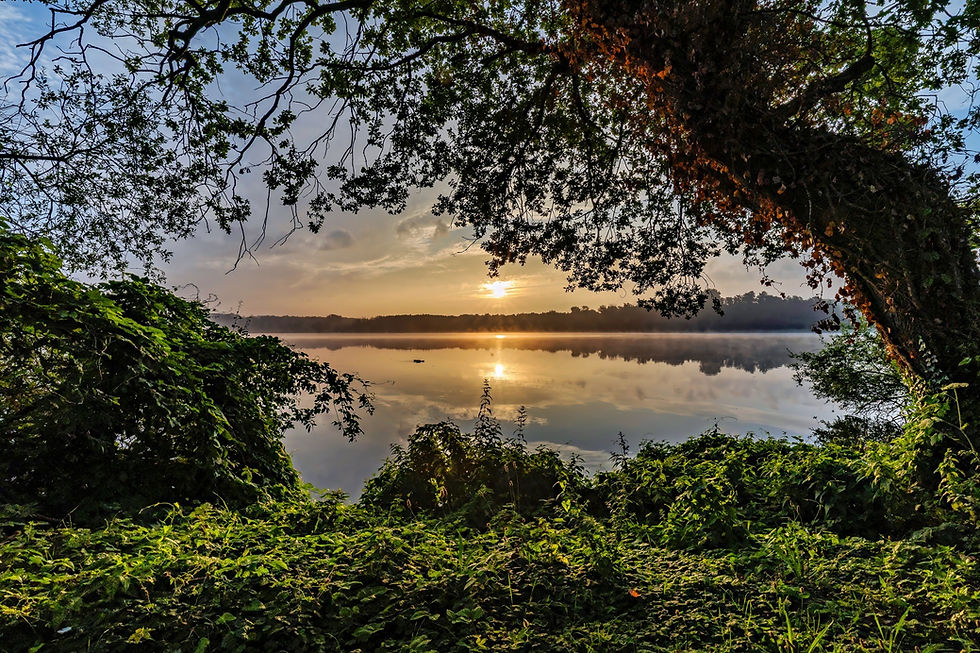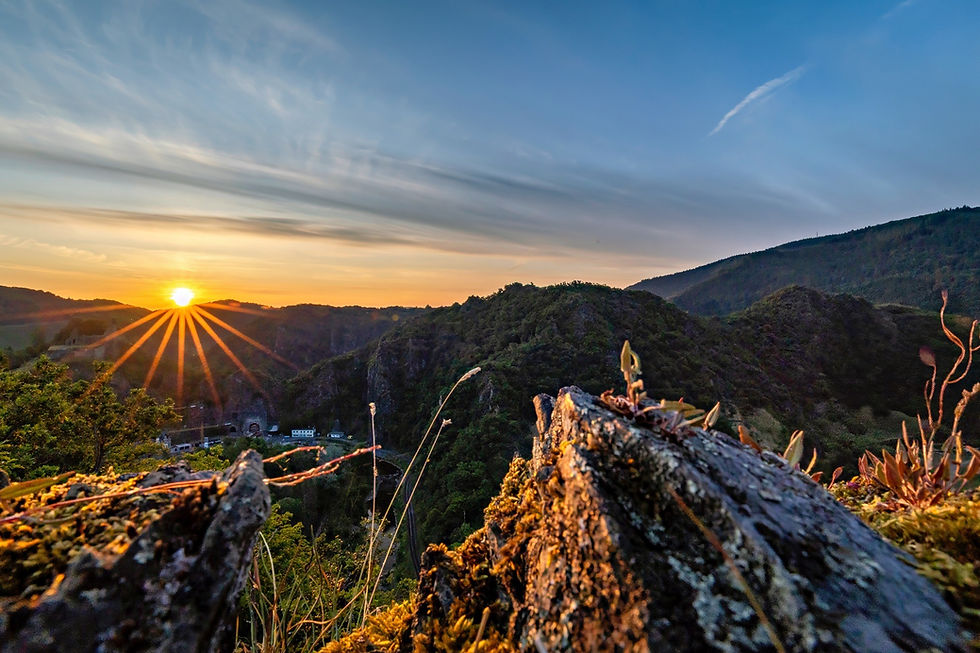Photography on the Side: Freedom, Ambition, and the Art That Lasts
- Lars-Henrik Roth
- 4. Okt.
- 6 Min. Lesezeit
Photography today feels like standing in heavy surf. Prices keep falling. AI pours out a river of images. Even the greats often fade behind their most famous frames. In that swell, how does artistic photography stay relevant? My answer is stubbornly simple: freedom — and the courage to aim high without tying our worth to sales or algorithms.
This essay is for those of us who shoot on the side: after work, before breakfast, between family plans, under weather windows that never check our calendars. We are not less serious because we are not full-time. In many ways, the constraints make us more intentional. Scarcity can sharpen vision. Real freedom is not infinite time; it’s choosing what to do with the little we have — and accepting the costs of choosing.
Why Artistic Photography Rarely Becomes a Career
Let’s be honest. Contemplative fine‑art work — especially quiet landscape and nature — rarely pays the rent. The market rewards speed, novelty, volume. Influencers test gear, post daily, and partner with brands. The patient photographer chases fog and light and silence. One model monetizes attention; the other cultivates depth. If you pick the second path, you likely keep a regular job — and that is not failure. It is a decision to protect your art from the compromises of permanent delivery.
This is not a slight against professionals. They carry real responsibility and deliver consistently under pressure. But side photographers enjoy a different advantage: independence. We can say no. We can wait. We can protect a personal voice that does not have to bend to the brief.

Time and Weather: The Daily Struggle
Life runs on schedules: office hours, meetings, school runs, dinner. Photography follows the sun and the sky. Golden hour lands at 6:30 on a Tuesday. The storm clears on a Thursday at 19:10. Time and light rarely agree. We steal minutes, not days. We get gray scenes on the only free morning, and miss magic while stuck in traffic. That friction hurts — but it also forges a certain steel: the willingness to try again tomorrow.
Scarcity changes how we prepare. We pre‑visualize. We pack with intent. We scout on maps at night, note tide charts and civil twilight, and keep a short list of “micro‑locations” for twenty‑minute windows. We accept that nine out of ten attempts will be studies, not masterpieces — and we go anyway.
Weather as Teacher
For landscape and wildlife, weather is not a backdrop; it is a mentor with a strict pedagogy. Fog teaches restraint: simplify, isolate, accept soft edges. Wind teaches patience: wait for the pause or embrace the blur. Harsh sun teaches humility: move into shadow, or come back when the light has a kinder angle. Studio photographers move lamps; we learn to move ourselves.
This posture changes more than technique. It changes us. Waiting in cold drizzle before dawn is not romantic when it’s happening. But discipline builds presence, and presence builds images with gravity. We do not conquer a landscape; we earn it in increments.

The Price Spiral and the Flood
Two realities bruise photography today. First, the price spiral: many offer work below cost, clients compare on price alone, and quality becomes invisible until it is too late. Second, the flood: AI and social platforms can publish ten thousand images before we finish a good edit. The response is not panic. The response is clarity.
Make fewer pictures that carry more weight. Be slow on purpose. Print. Sequence. Let work season in a drawer. The images that last are not the ones that appeared first; they are the ones that keep speaking after the noise moves on.
Invisibility — and Why It Can Be a Gift
Ask a room about famous photographs, and many can describe them. Ask about the creators, and silence follows. Even giants are niche names. Pictures achieve fame; photographers remain shadows. That stings — until you realize the gift: if recognition is rare and unpredictable, then the only stable reward is the work itself. We can stop bargaining with a fickle public. We can do the work because it is the work we must do.
Why Rare Moments Hit Harder
Full‑time photographers shoot daily and must deliver whatever the weather brings. We shoot less — weekends, vacations, odd hours. Paradoxically, that rarity adds voltage. A good frame feels hard‑won because it is. Like a flower that blooms once a year, a single clear moment in fog or a brief fire in the sky can power months of effort. Scarcity becomes an amplifier — not of hype, but of meaning.

Independence Without Smallness
Freedom does not mean playing small. Independence gives room for ambition without dependence. We can submit to contests, hang work in group shows, aim for editor’s picks, or catch an Explore feature — not as validation, but as conversation. Ambition is not the enemy of honesty; pretending we do not care is. What matters is the direction of desire: toward deeper seeing, not toward a number on a screen.
Practices for Side Photographers (A Gentle Code)
Not rules — practices. Five commitments that keep me honest when time is short:
1) Show up when the window opens. Ten minutes are enough if you are ready.2) Edit as if your time were scarce — because it is. Keep only the frames you would print.3) Sequence with intention. A single photograph is an event; a sequence is an argument.4) Print small and live with the work. The wall will tell you truths the screen does not.5) Protect your voice. Learn from trends; do not borrow their accent.
Adopt, amend, discard. The code is yours to tailor.

Craft Without Apology
Shooting on the side does not excuse sloppy craft. If anything, scarcity demands precision. Know your camera so well that you can set it in the dark. Carry clean filters and a second battery. Use a tripod when it matters, handhold when it doesn’t, and learn the difference. Expose for intention, not habit. If your time is precious, let your technique be quiet and exact.
Editing, Sequencing, and the Long View
The internet rewards immediate output; art rewards the long view. Do both if you must, but protect a private pipeline where images can breathe. Live with contact sheets. Revisit a folder six months later and see which frames keep their charge. Build bodies of work, not piles of posts. The best edits feel less like filtering and more like listening: which pictures still speak when the trend has moved on?

Community Without Performance
Side photographers often lack time for constant posting — and that can be an advantage. Engage in ways that do not drain your practice: a quiet critique group, a print swap, a monthly walk with one lens. Let community be an instrument, not a stage. We do not owe the algorithm our attention. If you choose to share, share deliberately — the story behind a picture, a contact sheet, a failure that taught you something real.
Money, Gear, and the Myth of Arrival
Buy the tools you need and can love. Ignore the fantasy that the next body will unlock your voice. New gear can expand possibility, but only curiosity expands vision. Budget like an adult; play like a child. Put money into experiences that lead to pictures — travel days, books that stretch you, fuel to reach places where weather happens. The camera you carry into hard weather is the right camera.

Closing Thought
So what looks like a disadvantage — practicing photography only on the side — can become a source of strength. We do not need to sell. We do not need to please. And yet we may still aim for everything: recognition, exhibitions, contests, editor’s picks and explores. We can live photography as a calling and pursue it with the ambition of the best.
I remain content with my 11,000 followers on Instagram, even as algorithms dull reach. I will not chase platform fame, promote sponsored gear, or jump at every trend.
I’ll go to work in the morning, come home at night — and on weekends, celebrate freedom: with the camera, with the light, in the forest.
If any of this resonates, take it with you into the field. That is where the argument is won — quietly, one frame at a time.





Kommentare